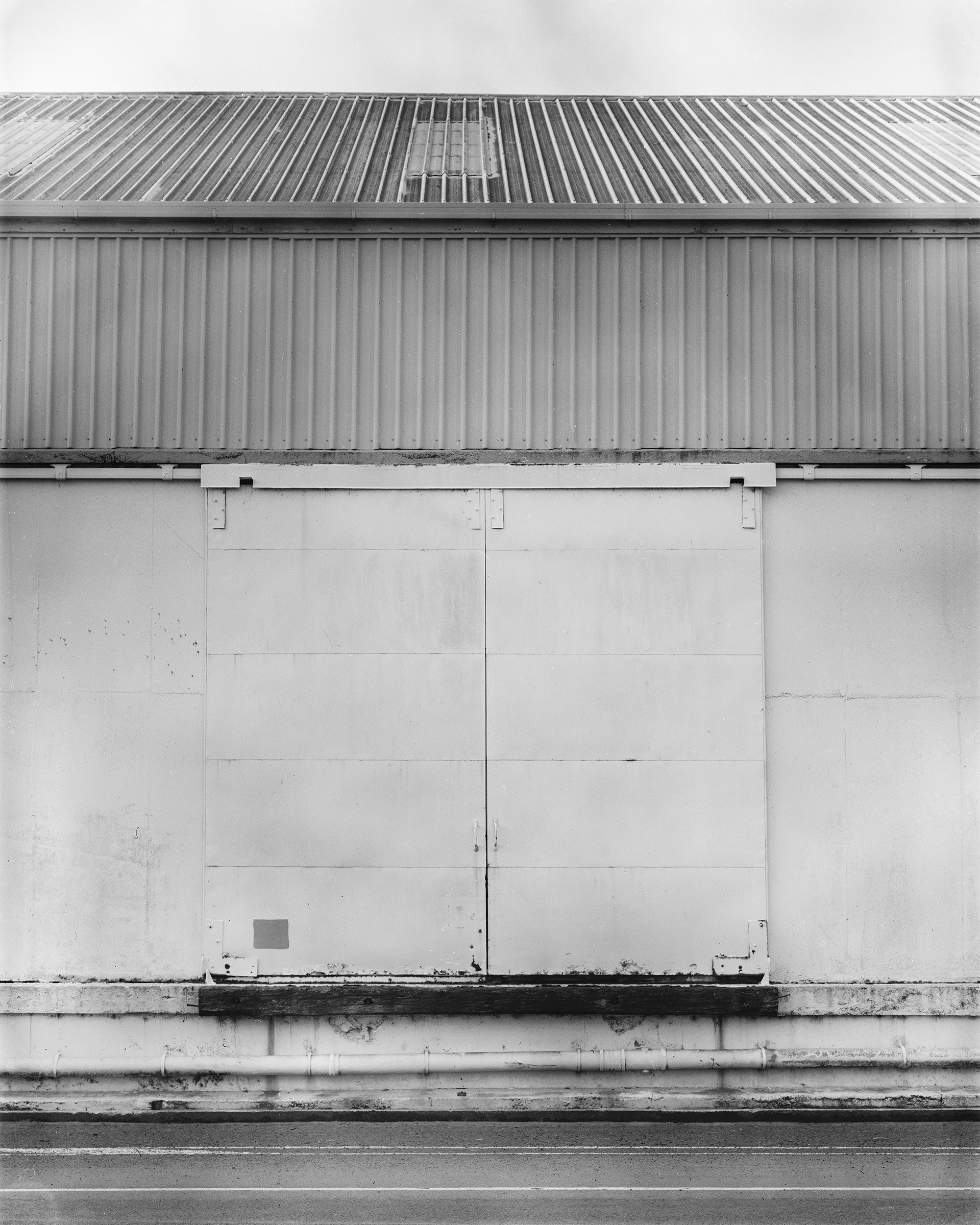Olga Galley, October 2023, Dunedin
In “When We Mean to Build,” Murray Eskdale continues to explore the aesthetic concerns that informed earlier exhibitions such as “Perspective” (2022), which included a series of colour digital prints that focus on, in the words of fellow artist Philip Madill, “an unsentimental depiction of modern life and commonplace objects”––in this case an array of contemporary architectural façades that are strikingly minimalist in their design. In contrast, the 2023 black and white photographic series “When We Mean to Build” offers a set of iconic landscapes or “views” (such as “Pylon, from South Road”) and buildings (“Hospital”) taken over July, August and September 2023. These will be familiar to Dunedin inhabitants, who will have passed the sites depicted many times, perhaps without even taking note of their existence.
These images convey an eery sense of “emptiness”––shot on black and white 5x4 sheet film with a large-format camera, the subsequent digital print (from the resulting negative) conveys no signs of human life, unlike those included in “Perspective,” which on close inspection always revealed the “messy” unpredictable traces of individuals’ activities. The absence of the human figure gives a vague post-apocalyptic feel to these urban scenes, many of which are marked by an encroaching obsolescence and decay. “E D 1954” explicitly conveys the passage of time, depicting a building erected more than half a century ago.
The carefully choreographed geometry of each frame imposes an aesthetic of control and containment upon each image, creating tightly organised graphic arrangements of delicate greys and blacks strictly marshalled by well-articulated perpendicular and horizontal boundaries––this formal discipline appears, almost, at least momentarily, to arrest the passage of time. Yet, these images also speak to and of the inexorably erosion of these edifices, depicted here as still and immovable monuments to human endeavour through the magic of technology. The Dunedin viewer is inevitably aware that neither “E D 1954” nor “Hospital” are destined to withstand the depredations of history as the city itself moves from one mode of industrial production to another––from the mechanical to the microelectromechanical.
In “When We Mean to Build,” Murray Eskdale continues to explore the aesthetic concerns that informed earlier exhibitions such as “Perspective” (2022), which included a series of colour digital prints that focus on, in the words of fellow artist Philip Madill, “an unsentimental depiction of modern life and commonplace objects”––in this case an array of contemporary architectural façades that are strikingly minimalist in their design. In contrast, the 2023 black and white photographic series “When We Mean to Build” offers a set of iconic landscapes or “views” (such as “Pylon, from South Road”) and buildings (“Hospital”) taken over July, August and September 2023. These will be familiar to Dunedin inhabitants, who will have passed the sites depicted many times, perhaps without even taking note of their existence.
These images convey an eery sense of “emptiness”––shot on black and white 5x4 sheet film with a large-format camera, the subsequent digital print (from the resulting negative) conveys no signs of human life, unlike those included in “Perspective,” which on close inspection always revealed the “messy” unpredictable traces of individuals’ activities. The absence of the human figure gives a vague post-apocalyptic feel to these urban scenes, many of which are marked by an encroaching obsolescence and decay. “E D 1954” explicitly conveys the passage of time, depicting a building erected more than half a century ago.
The carefully choreographed geometry of each frame imposes an aesthetic of control and containment upon each image, creating tightly organised graphic arrangements of delicate greys and blacks strictly marshalled by well-articulated perpendicular and horizontal boundaries––this formal discipline appears, almost, at least momentarily, to arrest the passage of time. Yet, these images also speak to and of the inexorably erosion of these edifices, depicted here as still and immovable monuments to human endeavour through the magic of technology. The Dunedin viewer is inevitably aware that neither “E D 1954” nor “Hospital” are destined to withstand the depredations of history as the city itself moves from one mode of industrial production to another––from the mechanical to the microelectromechanical.
By drawing on both the mechanical (through the camera) and the digital (through his printing process), the artist mirrors in his own practice that shifting landscape that his images seek to represent. The viewer is invited, then, to invest these images with both a sense of, one, nostalgia for the past as incarnated in the analogue image, and, two, admiration for the present as represented in the miracle of this same image’s resurrection through digital technology. As such, this series ask us to value the past, while looking to the future.
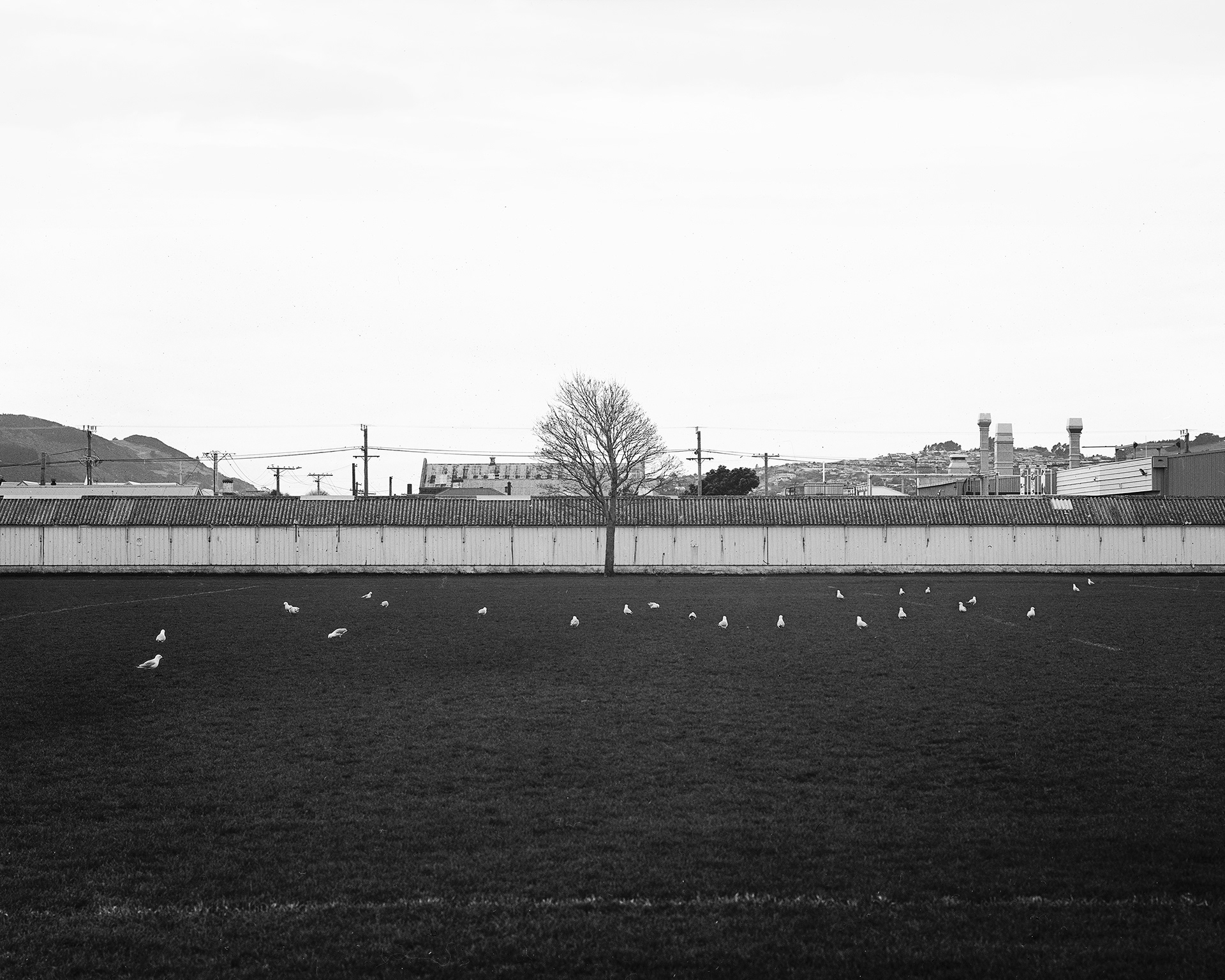
'Bathgate Park'
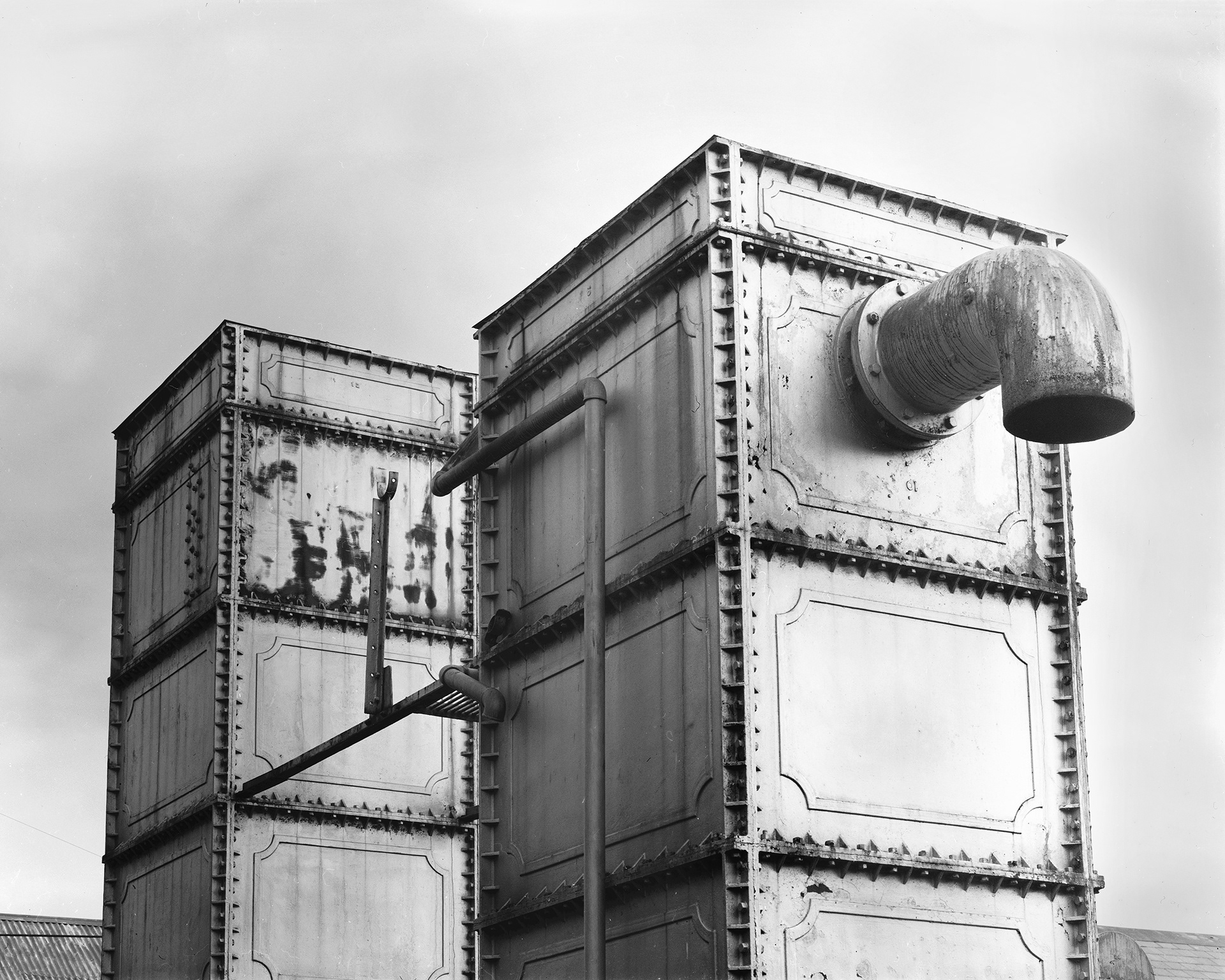
'Condenser Towers'

'De-Tarrer and Ammonia Washer'
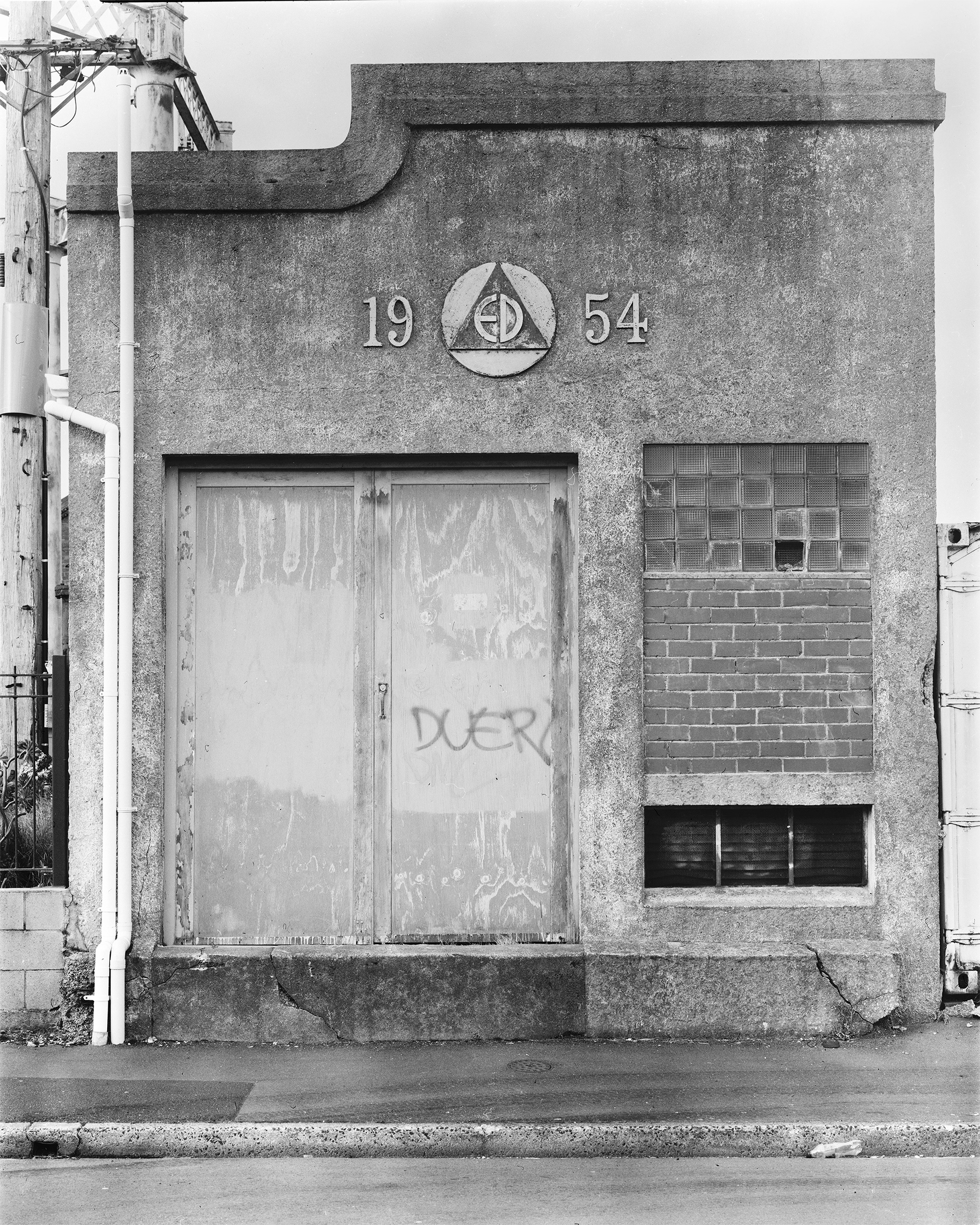
'E D 1954'
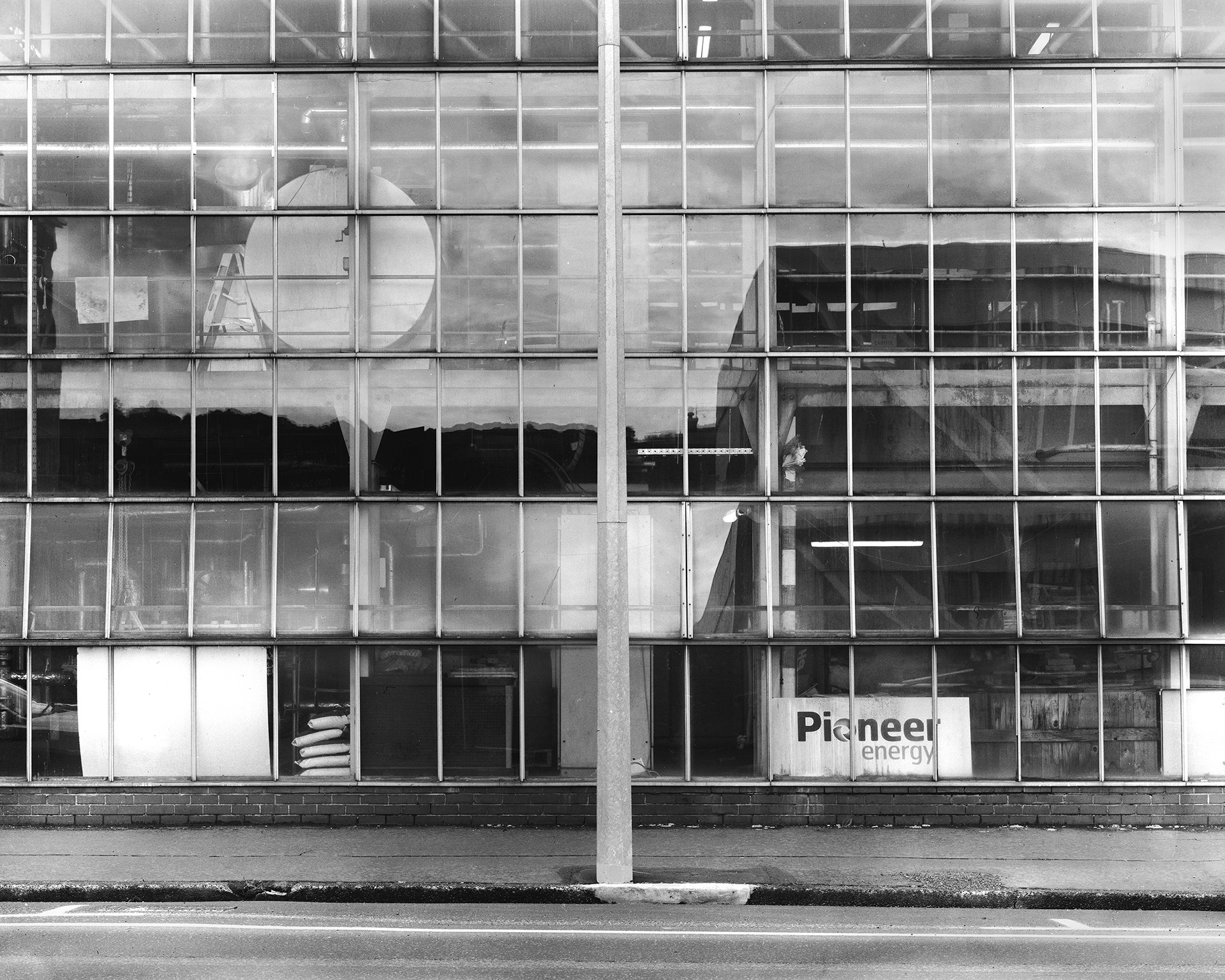
'Energy'
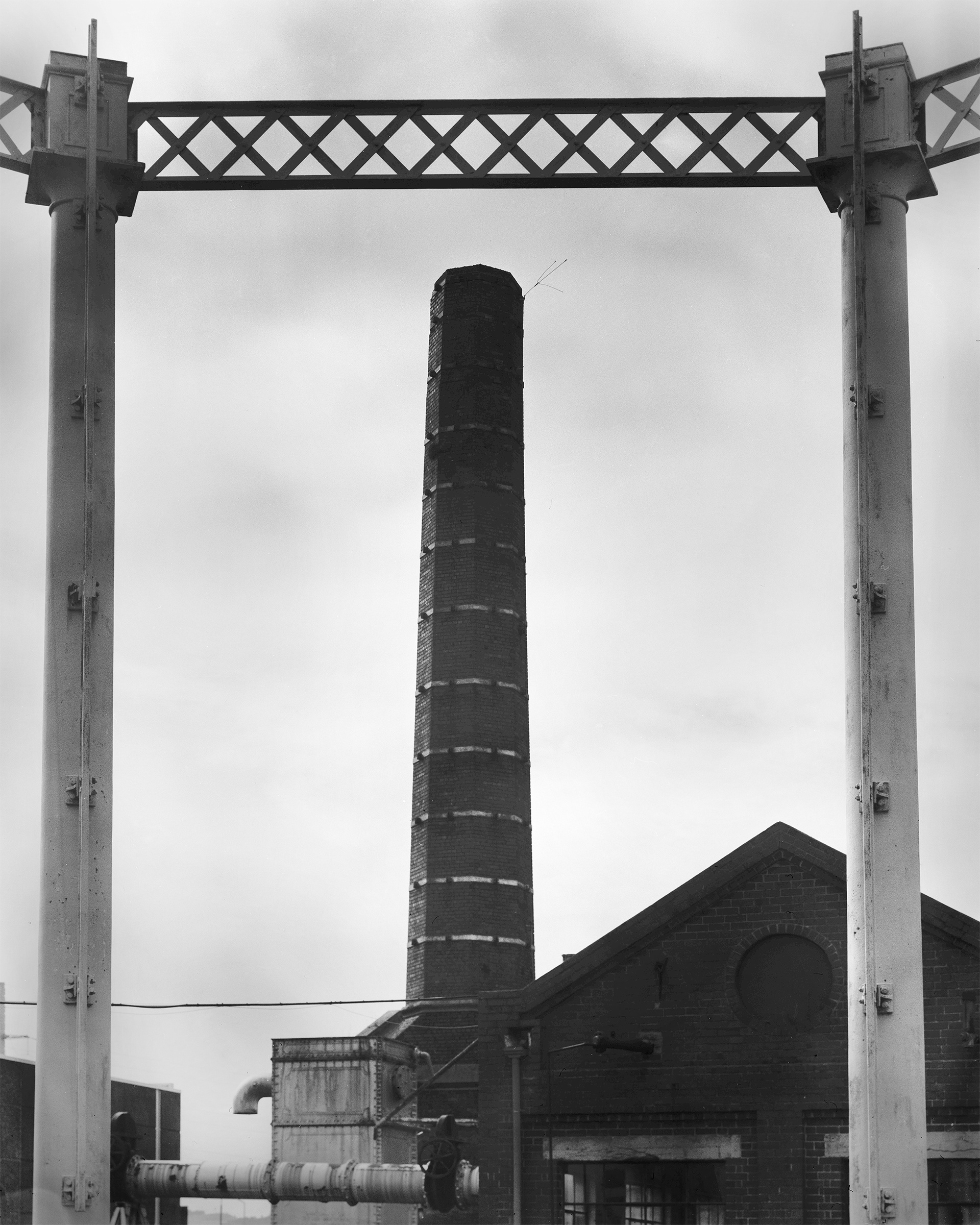
'Gasworks Chimney'
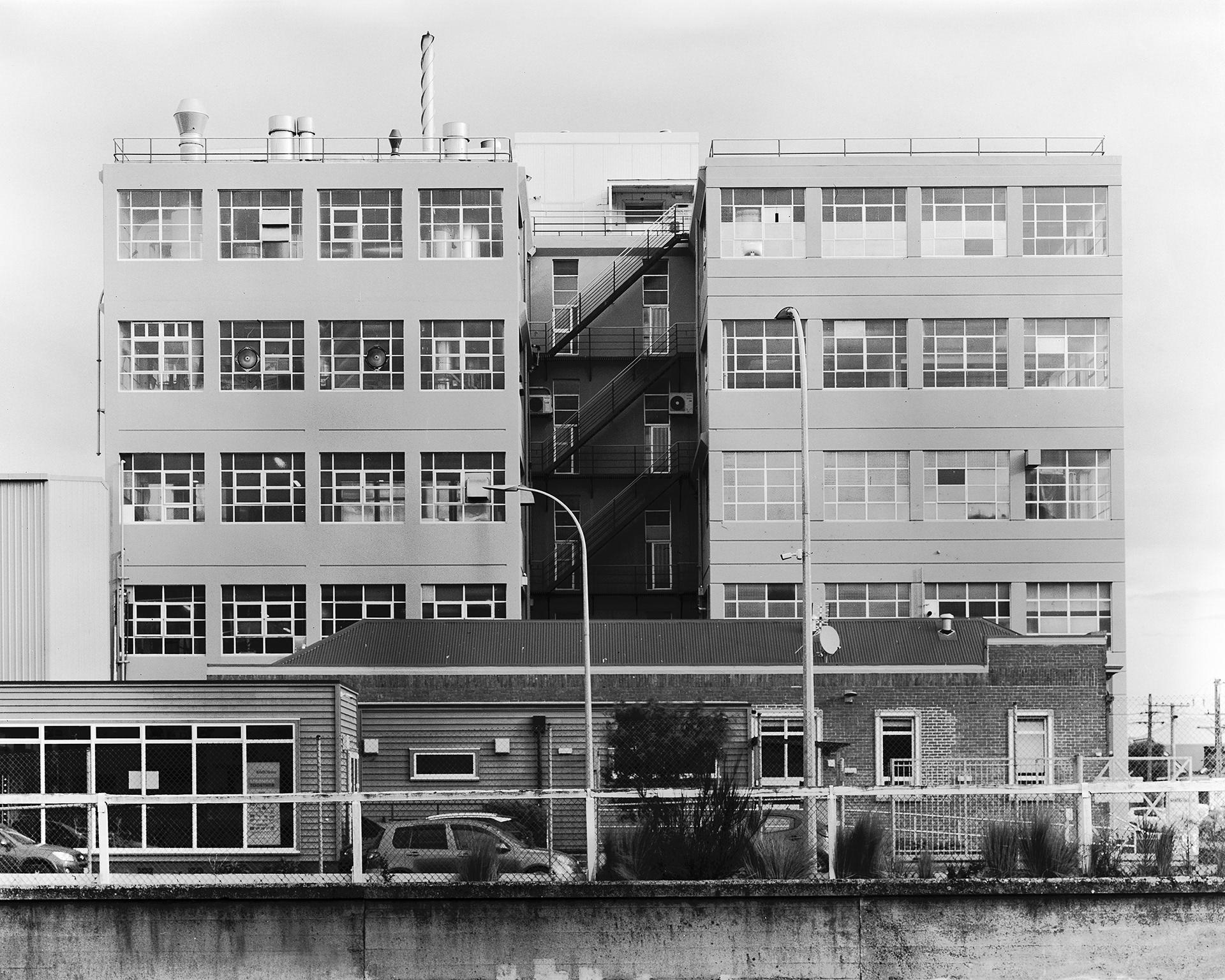
'Gregg's revisited'

'Hospital'

'Pipe'
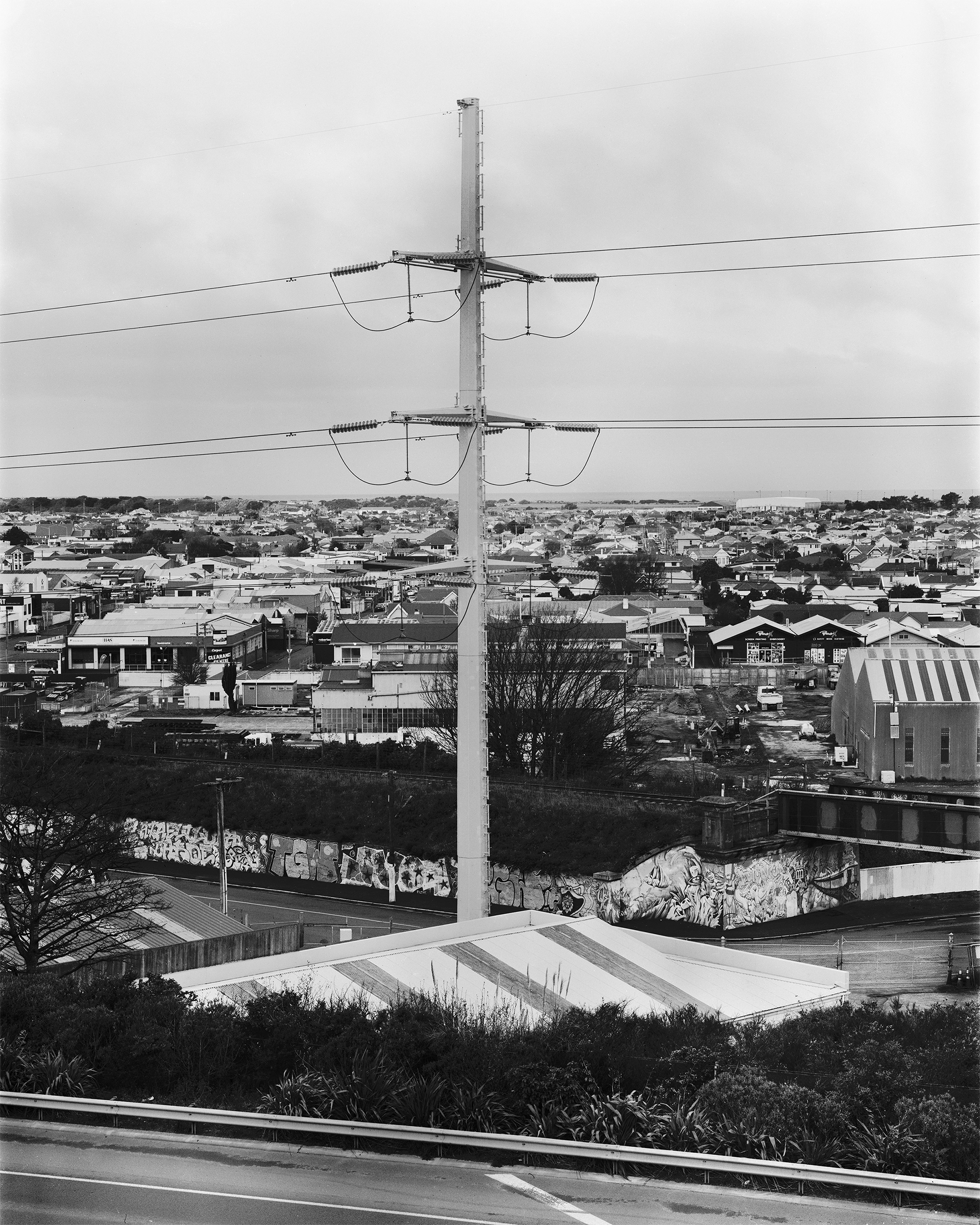
'Pylon, from South Road'
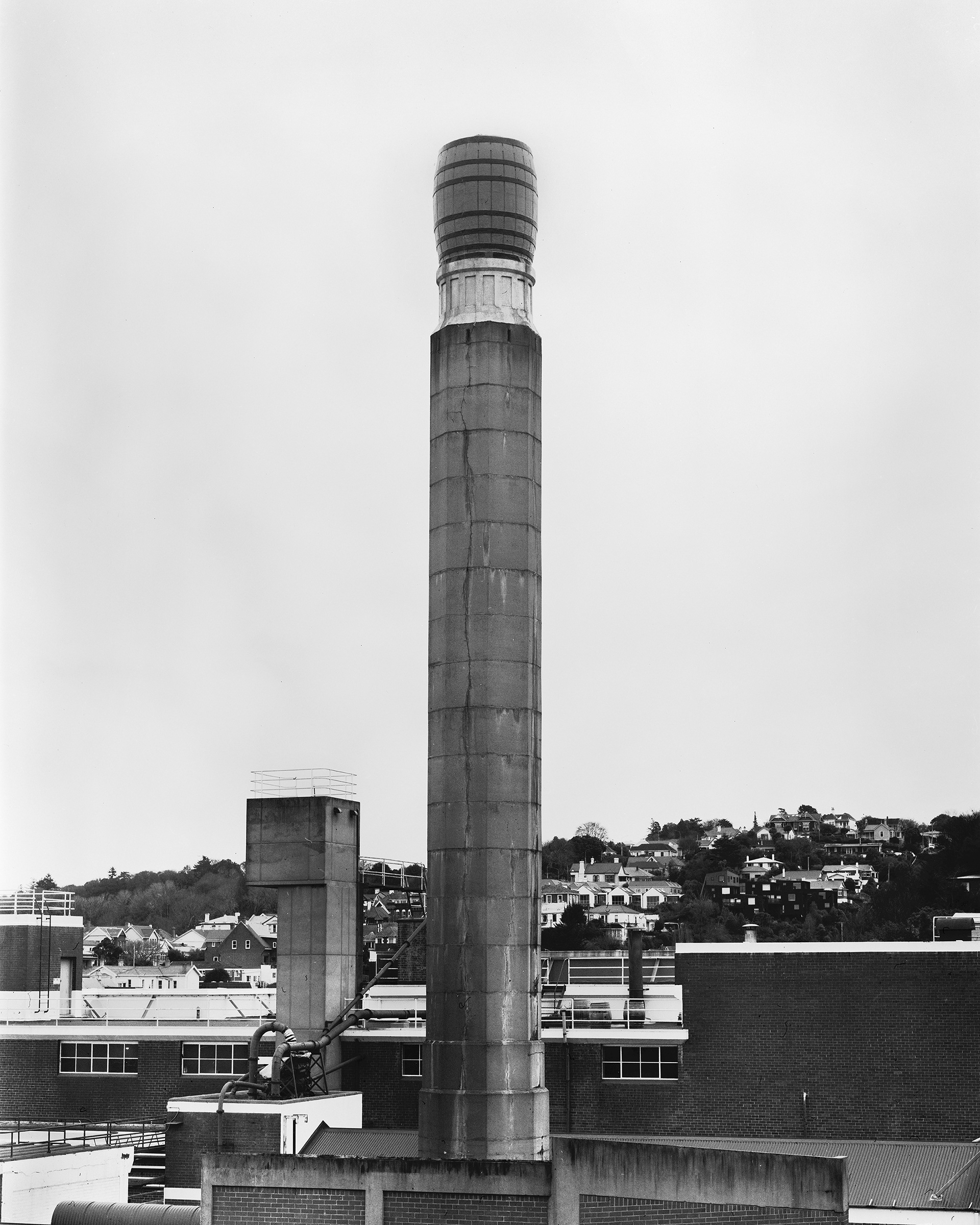
'Speight's Barrel'
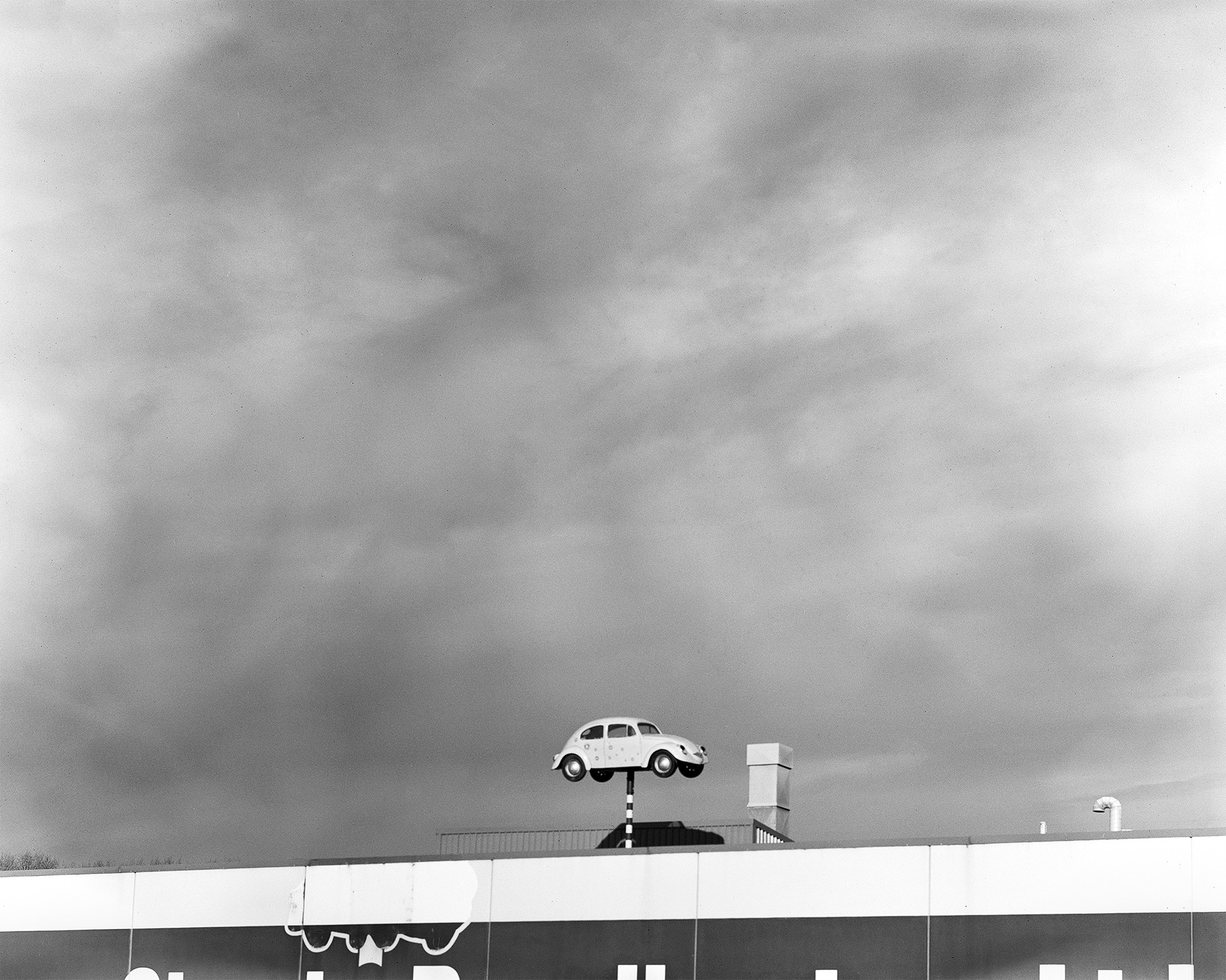
'Up the Pole'
